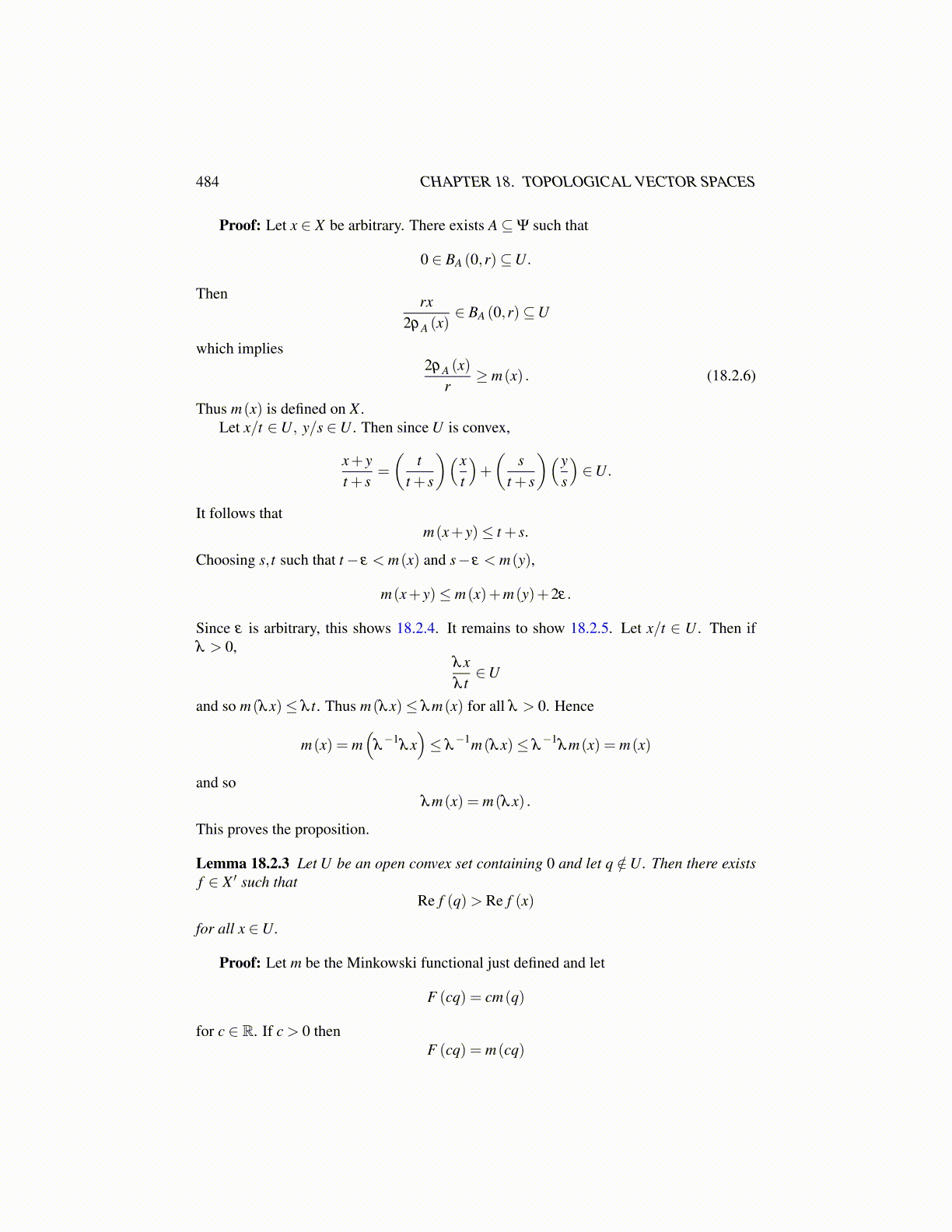
484 CHAPTER 18. TOPOLOGICAL VECTOR SPACES
Proof: Let x ∈ X be arbitrary. There exists A⊆Ψ such that
0 ∈ BA (0,r)⊆U.
Then rx2ρA (x)
∈ BA (0,r)⊆U
which implies2ρA (x)
r≥ m(x) . (18.2.6)
Thus m(x) is defined on X .Let x/t ∈U, y/s ∈U . Then since U is convex,
x+ yt + s
=
(t
t + s
)(xt
)+
(s
t + s
)(ys
)∈U.
It follows thatm(x+ y)≤ t + s.
Choosing s, t such that t− ε < m(x) and s− ε < m(y),
m(x+ y)≤ m(x)+m(y)+2ε.
Since ε is arbitrary, this shows 18.2.4. It remains to show 18.2.5. Let x/t ∈ U . Then ifλ > 0,
λxλ t∈U
and so m(λx)≤ λ t. Thus m(λx)≤ λm(x) for all λ > 0. Hence
m(x) = m(
λ−1
λx)≤ λ
−1m(λx)≤ λ−1
λm(x) = m(x)
and soλm(x) = m(λx) .
This proves the proposition.
Lemma 18.2.3 Let U be an open convex set containing 0 and let q /∈U. Then there existsf ∈ X ′ such that
Re f (q)> Re f (x)
for all x ∈U.
Proof: Let m be the Minkowski functional just defined and let
F (cq) = cm(q)
for c ∈ R. If c > 0 thenF (cq) = m(cq)